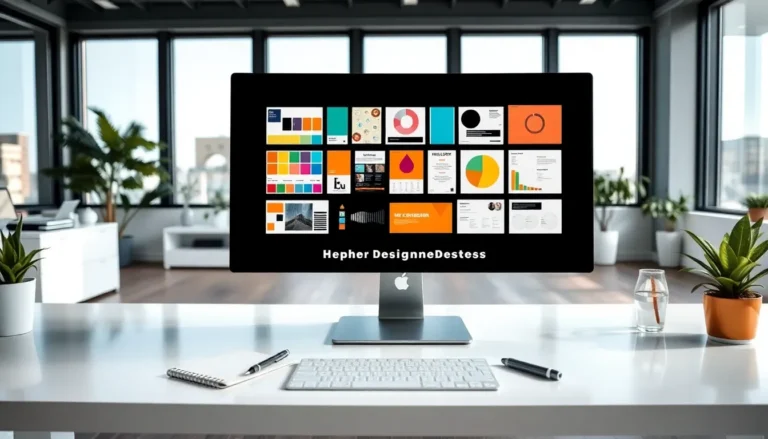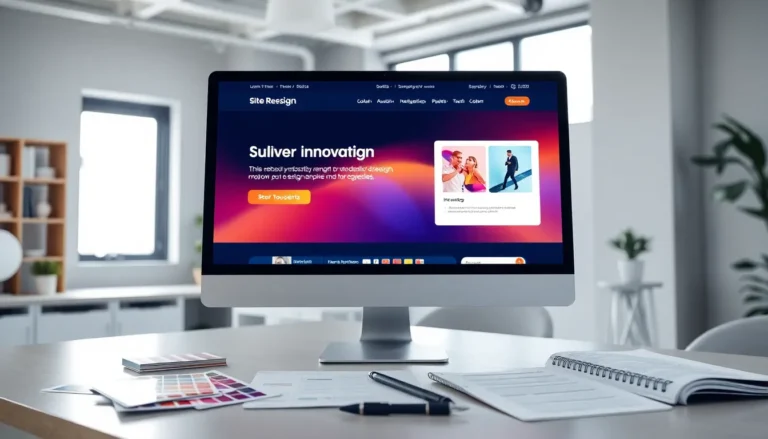Table of Contents
ToggleDesign concepts are the unsung heroes of engineering, transforming wild ideas into tangible solutions. Engineers often juggle complex calculations and technical specifications, but they must also embrace creativity to breathe life into their projects. With the right design concepts, they can turn the mundane into the extraordinary, ensuring their creations not only function but also dazzle.
Overview of Design Concepts for Engineers
Design concepts form the backbone of effective engineering practices. They guide engineers in transforming abstract ideas into tangible products. Several key principles underpin these concepts, such as aesthetics, functionality, and usability.
Aesthetics engages users visually, making designs more appealing. Functionality ensures that the product performs its intended purpose efficiently. Usability focuses on creating intuitive interactions, allowing users to navigate products easily.
The design process often involves iterative cycles. Engineers prototype, test, and refine their designs, leading to improved final products. Feedback from stakeholders plays a vital role in this process, providing insights that shape adjustments.
Collaboration enhances design outcomes. Engineers frequently work with designers, marketers, and end-users. This interdisciplinary approach fosters innovative solutions that meet market needs effectively.
Additionally, consideration of environmental impacts influences design choices. Sustainable materials and energy-efficient solutions have gained prominence in the engineering landscape. These considerations ensure that design concepts align with ecological principles.
Emerging technologies also shape modern design strategies. Engineers leverage advancements in software and materials to create smarter, more adaptable products. Innovations like 3D printing and AI-driven design tools streamline development processes.
Addressing constraints is crucial for successful design. Engineers must balance cost, time, and resource limitations while striving for creativity. This balance leads to pragmatic solutions that maintain engineering integrity.
Overall, design concepts empower engineers to realize their vision. Through thoughtful application of these principles, they can deliver products that stand out in functionality and appeal.
Importance of Effective Design Concepts
Effective design concepts play a crucial role in engineering. They bridge innovative ideas and practical solutions, making projects not only feasible but also impactful.
Enhancing Functionality
Functionality lies at the heart of any successful engineering project. Smart design concepts prioritize ease of use, ensuring that products operate efficiently in real-world scenarios. Attention to detail ensures that each component serves a specific purpose, minimizing potential failures. Incorporating feedback from user testing leads to adjustments that enhance overall performance. Engineers often rely on iterative prototyping, which uncovers areas for improvement and refines the user experience. Ultimately, a strong focus on functionality guarantees that products meet both technical specifications and user needs, which sets them apart in competitive markets.
Improving Aesthetics
Aesthetics significantly influence the perception of engineering projects. Striking designs grab attention and make products visually appealing. People often associate good aesthetics with higher quality and reliability. Processes that incorporate visual elements, colors, and shapes foster emotional connections with users. Thoughtful design choices can elevate a product’s status, making it more desirable to consumers. Effective combinations of form and function create memorable experiences, enhancing user satisfaction. Prioritizing aesthetics in design concepts ultimately contributes to the product’s success, ensuring it resonates well with target audiences.
Key Principles of Design
Design concepts rely on core principles that guide engineers in creating effective and appealing solutions. Focusing on user needs and sustainability are vital in modern engineering practices.
User-Centered Design
User-centered design emphasizes the importance of understanding the end user. Observing their behaviors and preferences leads to the development of products that enhance the user experience. Engaging users through feedback mechanisms informs necessary improvements throughout the design process. Iterative testing enables engineers to refine their products based on real-world interactions. By prioritizing usability, designers create intuitive interfaces that foster user satisfaction and loyalty. Incorporating user-centered principles not only fulfills functional requirements but also promotes emotional engagement with the product.
Sustainability Considerations
Sustainability considerations play a crucial role in contemporary design concepts. Engineers should prioritize eco-friendly materials that minimize environmental impact. Sustainable design involves energy-efficient solutions that reduce resource consumption during operation. Implementing lifecycle assessments helps identify areas for improvement in terms of sustainability. By focusing on responsible design, engineers contribute to a circular economy, promoting reuse and recycling. Awareness of environmental regulations also influences design decisions, ensuring compliance and fostering innovation. Adopting sustainability principles ultimately leads to products that support both functional and ecological objectives.
Common Design Tools and Techniques
Design tools and techniques play a critical role in engineering, enabling effective visualization and execution of concepts. Engineers employ various methods to refine their designs and improve functionality.
CAD Software
Computer-Aided Design (CAD) software remains a cornerstone in engineering design. This technology allows for precision drafting and 3D modeling, simplifying the complex process of creating detailed drawings. Popular CAD tools like AutoCAD, SolidWorks, and CATIA offer extensive capabilities, including simulation and rendering features. These applications enhance collaboration among team members by enabling easy sharing of designs. Engineers can quickly modify elements, assessing how those changes impact overall functionality and aesthetics.
Prototyping Methods
Prototyping methods facilitate the transformation of ideas into tangible products. Engineers often utilize techniques such as 3D printing, CNC machining, and paper prototyping for testing design concepts. Rapid prototyping allows for quick iterations, enabling immediate feedback from stakeholders. Techniques like low-fidelity prototypes evaluate usability and ergonomics before finalizing production. Iterative testing identifies design flaws early, reducing development costs and improving user experience. These methods ensure that the final product aligns with both engineering specifications and user needs.
Real-World Applications of Design Concepts
Design concepts find extensive applications in engineering, translating theoretical innovations into tangible outcomes. They shape products and solutions that meet real-world challenges effectively.
Case Studies in Engineering
Successful engineering projects showcase the power of effective design concepts. For example, the redesign of the Boeing 787 Dreamliner emphasizes aerodynamics and fuel efficiency. Engineers incorporated lightweight materials, allowing for reduced operational costs and enhanced performance. Another compelling case involves Tesla’s electric vehicles, where user-centered design maximizes functionality and aesthetics. The intuitive dashboard interface improves usability, creating a seamless experience for drivers. These case studies illustrate how strategic design choices elevate engineering projects, ultimately benefiting users and stakeholders alike.
Innovations Driven by Design
Design concepts drive numerous innovations across various engineering fields. Automated manufacturing utilizes Computer-Aided Design (CAD) for efficiency, enabling rapid prototyping and modifications. This approach accelerates product development timelines and enhances collaboration among teams. Moreover, the rise of sustainable design practices leads to the creation of eco-friendly products, like biodegradable packaging in consumer goods. Engineers address environmental concerns by integrating sustainable materials, contributing to a circular economy. Each innovation stems from applying effective design principles to meet contemporary market demands, fostering a more innovative future.
Design concepts play a pivotal role in the engineering landscape. They not only bridge the gap between innovative ideas and practical solutions but also enhance the overall user experience. By prioritizing aesthetics, functionality, and usability, engineers can create products that resonate with users while addressing real-world challenges.
The integration of emerging technologies and sustainable practices further enriches the design process. Collaboration among diverse teams fosters creativity and ensures that solutions are both effective and environmentally responsible. Ultimately, embracing design concepts empowers engineers to transform their visions into impactful realities, delivering products that stand out in a competitive market.







